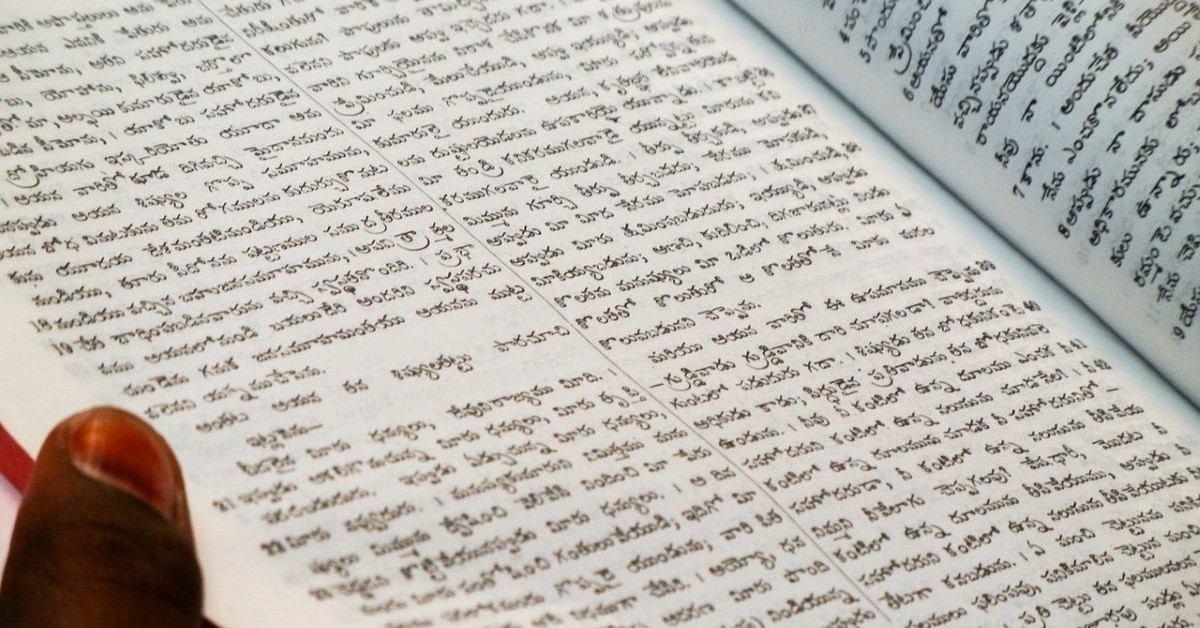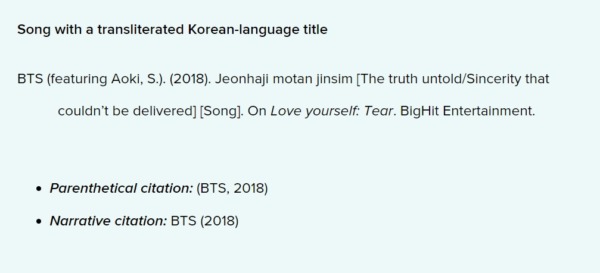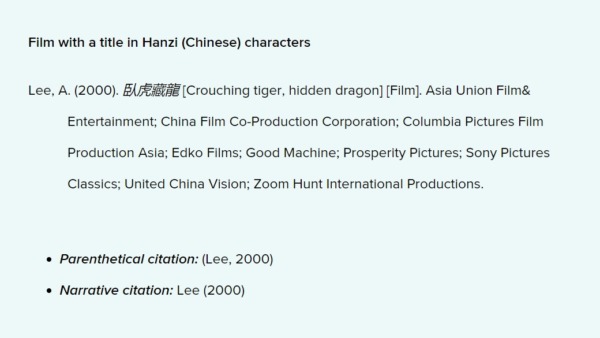How do I reference… a foreign language item in the APA7 style?
21/11/2024

Students sometimes ask if it is permissible to include non-English language items in their work and references. The answer is yes. You can include sources written in a language other than English provided that they are relevant to your work. When you use a non English-language source please take care to ensure that your translation or paraphrase is accurate and conveys the original meaning precisely.
When you use a translation in your own work, be aware that your translation is considered a paraphrase and not a direct quotation. With this in mind, the in-text citation for the translation should simply include the author and date of the original material. If however you want to make life easier for a reader who does speak the language of the work, you can include a page number in the citation. The following APA blog post may give further clarification.
The reference for a source in a language other than English follows the typical APA Style formatting for the source, and presents the original title of the work and the English translation of the title in square brackets.
A journal article requires the following elements to create a bibliographic reference – now with the addition of the translated title inside square brackets.
- Author(s) of the article (Surname, Initials.)
- (Year of publication).
- Title of article [English translation of title of article].
- Title of the journal in full – in italics,
- Volume – in italics(Issue – not in italics)
- Page details.
- DOI or web address – if available
Citing and referencing a journal article in another language:
Here we have an article from a French journal. We cite and reference it as follows:
In-text citation:
Parenthetical citation: (Lebat et al., 2013)
Narrative citation: Lebat et al. (2013) argued that…
Bibliographic reference:
Lebat, H., Farhat, S-L., Andreu, S., Cros, L., Rocher, T., Magnan, A., & Ecalle, J. (2013). Les évaluations des enseignants en grande section de maternelle sont-elles prédictives des difficultés de lecture au cours préparatoire [Assessment of early knowledge predictive of learning to read in the final year of kindergarten]. Revue Française de Pédagogie, 184, 41-54. http://doi.org/10.4000/rfp.4219
Citing and referencing a journal article in a language written in a different alphabet:
If the language of your source document is written using a different alphabet, if possible try to transliterate into the Roman alphabet.

Example from APA blog post, ‘When and how to transliterate titles in references’, August 23 2021.
If transliteration is neither possible nor desirable, you can leave the original alphabet title then simply provide the English translation straight afterwards, as with the French example above.

Example from APA blog post, ‘When and how to transliterate titles in references’, August 23 2021.
Further information and more examples on this can be found in the APA blog post When and how to transliterate titles in references from August 23 2021.
Any questions about referencing? Consult our Referencing and Plagiarism pages or drop us an email here.
Please note: Cranfield supports two different referencing styles – APA7 (Author-date) and Numbered (NLM). Please make sure you use the style preferred by your supervisor or lecturer. The advice above relates only to the APA7 style. If you have any questions about referencing, please contact the Library.
Feature image from Pixabay. Available at: https://pixabay.com/photos/asia-india-travel-bible-scriptures-2753733/
Categories & Tags:
Leave a comment on this post:
You might also like…
Preparing for assignments and exams?
Sorry! We know it seems a bit mean to mention the exams in January rather than looking forward to the break before it! However, we know many of you will be thinking about your forthcoming ...
Screening for FTSE 100 companies on Bloomberg
So you’re researching an index and need some data on its constituent companies? Bloomberg’s Equity Screening tool makes light work of this, not just for the FTSE, but for indices, exchanges and sectors worldwide. Type EQS ...
Accelerating my future: How Cranfield put me on the fast track to automotive safety innovation
Hello! I’m Michaela Kaiser, and I’m thrilled to share my journey studying abroad. I’m from Calgary, Canada, and I recently graduated from Cranfield’s MSc Automotive Engineering course. My path to Cranfield ...
From Myanmar to Cranfield: My path to Renewable Energy
As someone who is passionate about sustainability, my career goal is to build a path in the renewable energy sector. My aspirations comes from the benefits of developing sustainable energy sources and ensuring energy ...
From lifelong dream to circular economy leader: Q&A with Himesha Randeni on the Environmental Management for Business MSc
What does it take to turn a lifelong passion for the planet into a fulfilling and impactful career? For Himesha Randeni, the answer was the Environmental Management for Business MSc at ...
Library services over the Christmas period
Kings Norton Library will be open 24/7 throughout the holiday period as a study space. Library staff will work until 6pm on Friday 19 December and will resume their normal working hours from 9am on ...






